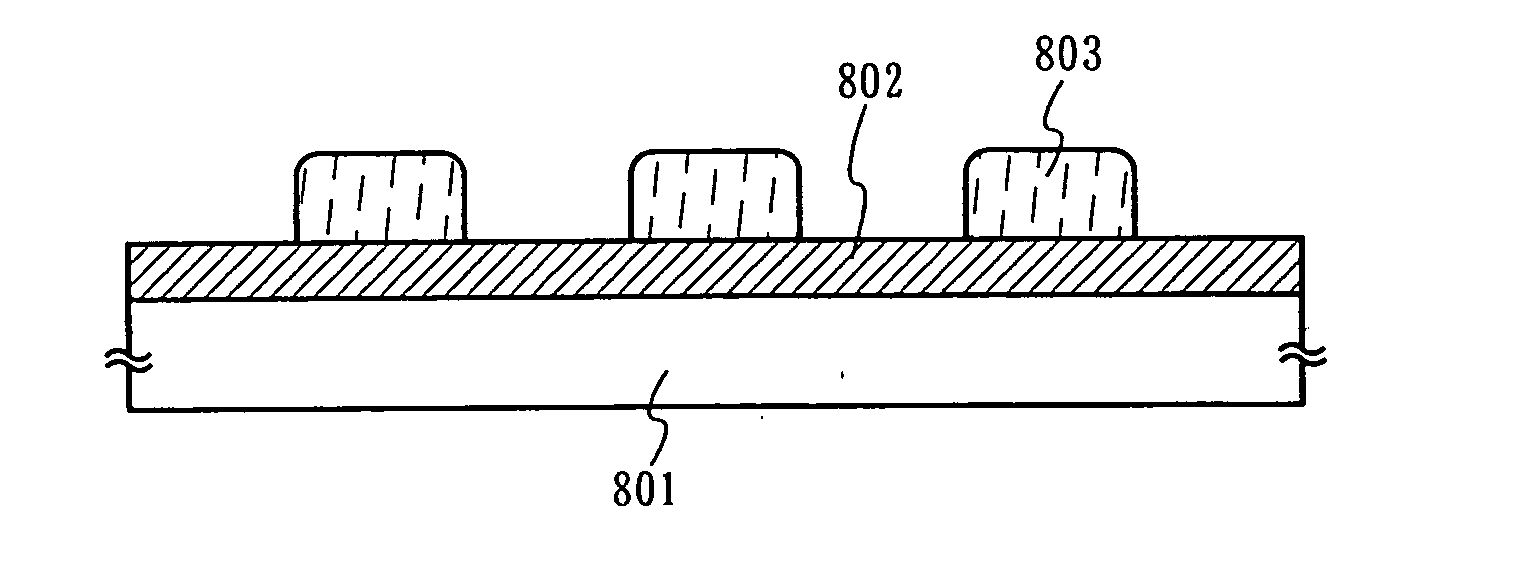Method for removing resist pattern and method for manufacturing semiconductor device
a technology of resist pattern and manufacturing method, which is applied in the direction of photosensitive materials, instruments, photomechanical equipment, etc., can solve the problems of difficult to remove resist pattern after doping or dry etching, difficult to remove deteriorated layer over the surface, and difficult to remove resist pattern
- Summary
- Abstract
- Description
- Claims
- Application Information
AI Technical Summary
Benefits of technology
Problems solved by technology
Method used
Image
Examples
Embodiment Construction
[0073] An acrylic resin layer having a thickness of 800 nm was formed on a glass substrate. A titanium nitride (TiN) film, an aluminum (Al:Si (1 wt %)) film, a titanium nitride (TiN) film, and a titanium (Ti) film were laminated in the stated order on the thus-formed acrylic resin layer in thicknesses of 60 nm, 40 nm, 300 nm, and 100 nm, respectively. Then, a diazonaphthoquinone (DNQ)-novolac resin type of positive resist composition was applied on the resultant laminate and subjected to a pre-baking treatment for a predetermined period of time at a treating temperature of about 100.degree. C. to form a resist film having a predetermined thickness. Thereafter, the thus-formed film was subjected to an exposure treatment for a predetermined period of time by using a 1:1 projection aligner utilizing light having a multiple of wavelengths (e.g., g-line, h-line, and i-line) of an ultra high-pressure mercury lamp and, then, subjected to a development treatment for a predetermined period o...
PUM
 Login to View More
Login to View More Abstract
Description
Claims
Application Information
 Login to View More
Login to View More - R&D
- Intellectual Property
- Life Sciences
- Materials
- Tech Scout
- Unparalleled Data Quality
- Higher Quality Content
- 60% Fewer Hallucinations
Browse by: Latest US Patents, China's latest patents, Technical Efficacy Thesaurus, Application Domain, Technology Topic, Popular Technical Reports.
© 2025 PatSnap. All rights reserved.Legal|Privacy policy|Modern Slavery Act Transparency Statement|Sitemap|About US| Contact US: help@patsnap.com



